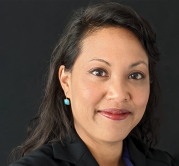Serving multicultural members by “reading the room”

Like many children of immigrants, my parents held down long hours at work and often juggled multiple income streams. This left me to be raised by my grandmother, an undocumented immigrant with no formal education. She could neither read nor write and did not speak English. For as long as I remember, I served as grandma’s translator for trips to the convenience store, to the bank, doctor’s appointments, and interactions with salespeople who asked to speak “to the adult in the household.”
Anyone who has ever served as a translator knows that it’s more than just translating words from one language to another. It’s also about translating cultural concepts that people in the mainstream may take for granted. Translators must often “read the room” and know their audience. This means being attuned to the subtle cultural cues that everyone will respond positively to, while adjusting communication style, reactions, and behaviors accordingly. In my case, I became attuned to evaluating whether an interaction required small talk before getting down to business, and making note of how prior interactions went, in order to be better prepared for next time.
For staff working behind the counters and tasked to serve diverse communities, what sorts of trainings do they get (if any) on how to read the room? While front-line staff members may get briefed on the essential behaviors of customer service, how often are they trained to adapt to the needs of those they’re assisting? As an adult, I still notice the burdens left on non-English speaking customers, those with disabilities, or people from low-income backgrounds, as they’re expected to accommodate to the norms of the situation— rather than finding themselves in a place where the staff have to accommodate to them, or at least meet them halfway.
The resistance to entertain someone else’s perspective and to center your own biases is what social scientists would call ethnocentrism. Ethnocentrism is the concept of evaluating another culture through our own standards and preconceptions based on the norms we’re most frequently exposed to in our own life experiences. To take an ethnocentric stance is to insist “my way is the right way.” It’s when we might judge apples for not being juicy enough, but that’s because we’ve been eating oranges for most of our life.
In its extreme form, ethnocentrism leads to discrimination and bars people from opportunities to improve their lives. Specifically in the case of our industry, ethnocentrism bars people from the opportunity to gain true financial empowerment. For example, we tend to have an ethnocentric view that large purchases should be done by credit card, and that cash (or even check purchases) are suspect. In my grandma’s case, paying for things in cash was preferred because she came from an economically unstable country where most financial transactions were done in cash (no matter how large or small). Moreover, writing checks was impossible for someone like her; she could barely write her own signature. But this presented many challenges when she arrived in the US; making a large cash withdrawal from the bank at any one time was seen with suspicion.
Last year, Ryan Coogler, director of the film “Black Panther” was detained after trying to withdraw a large amount of cash from an Atlanta bank. This request prompted the bank teller to alert the manager of a possible bank robbery taking place, when in fact, Mr. Coogler (who is African American) was using cash from his own account to pay a medical assistant employed by his family. He was soon released from detainment without any charges.
In the financial services industry, there are many stories of bias and discrimination experienced by members from historically-underbanked and underserved groups. Because of his celebrity profile, Mr. Coogler’s story made headlines. But how many more incidences like his happen on a daily basis? What are the seemingly innocent, unconscious ways that we perpetuate ethnocentrism at the credit union without realizing it? How does ethnocentrism compromise a credit union’s ability to become a trusted financial ally?
When it comes to improving customer service for diverse communities, start by critically analyzing internal practices and processes that we might have assumed are neutral. What are our assumptions around how transactions should be conducted, and how are historically underbanked groups challenging us to think differently? Below are a few ways to begin critically self-assessing your credit union’s practices, so that your credit union can begin “reading the room” and adjusting to the circumstances accordingly:
- Do you have an awareness of the diverse demographics of your community, and some of their culturally-specific relationships to finances? Who are the trusted leaders of these communities that you can refer to if you’d like to learn more?
- Does your credit union have enough signage with clearly laid-out information and infographics for members with social anxiety, dyslexia, or those who have yet to gain fluency in English?
- What documents are most frequently used by your members who don’t speak English fluently? Are they translated and updated regularly?
- Do photos in your marketing materials include diverse people (ethnicity, disability, genders, ages, body size) and diverse family structures (same sex couples, single parents, multi-generational households)?
- Has your staff been trained to unlearn biases that may exist when members make deposits or withdrawals for large amounts of cash?
- What options are available to provide services for members who work non-traditional hours? Do you have methods to reach out to members who are seasonal laborers and may not have the same address for more than a few months at a time?
Tackling everyday ethnocentrism begins with being reflective of our own practices and finding ways to include a wider range of perspectives and ways of doing things. Many organizations tend to be reactionary after incidents of unconscious bias have been reported— which by then, means it’s too late. We encourage a proactive approach towards being more reflective, learning what biases may exist in our organizations, and implementing organizational change that encourages staff, leaders, and board members to learn how to “read the room”—or more accurately, how to “read the community.”

